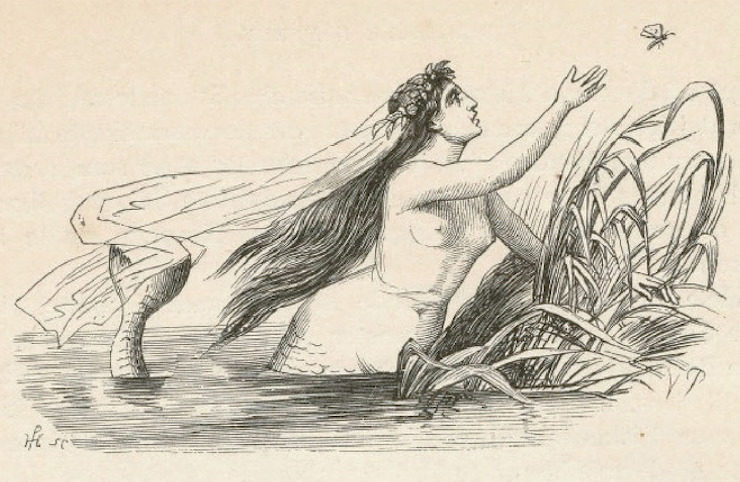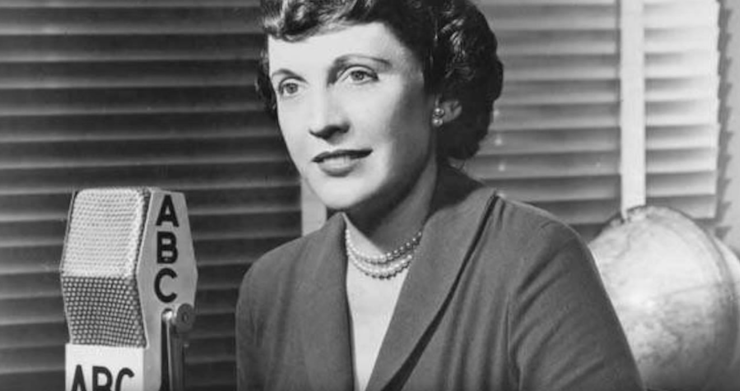[Note: This essay is adapted from a lecture delivered by the author at Utah State University in October, 2017; video of the lecture is available here.]
Raise your left hand in the air and keep it there.
Did you do it? If so, you are extraordinary. A strange woman just told you to do something, and you listened. On a historic scale, that’s not just different. That’s revolutionary.
There are a lot of people in the world who wish you hadn’t done it. People who don’t like me personally, because I’m the kind of woman who gets up in the front of the room and starts telling people what to do. People who don’t like me in theory, because of what I represent to them. People who you know. People who are participating in a cultural narrative that is woven into the fabric of our society.
I’m not mad at these people, even though some of them have threatened my life. Even though some of them have threatened my family. Even though some of them have said they’d like to come to my home and shoot me in the head rather than see me continue standing up at the front of rooms, telling people what to do. I’m not mad at them, and I’m not scared of them. Because I recognize what they really are.
They’re terrified.
Of course they’re terrified. For millennia, Western society has insisted that female voices—just that, our voices—are a threat. We’re afraid of wolves, and we’re afraid of bears, and we’re afraid of women.
Pictured above is Odysseus, the titular hero of Homer’s Odyssey. In this picture, he’s resisting the call of the Sirens. The Sirens, for those who don’t know, were cursed women. In some versions of the myth, they failed to find Demeter’s daughter, Persephone, when she was kidnapped by Hades, the god of the underworld. As punishment, they were imprisoned on islands and trapped in horrible chimeric half-bird forms.
For the women who became Sirens, the curse was being marooned on islands, trapped for eternity. For the men who dared to sail too near, the real curse was the Sirens’ voices. Those voices were a curse because they could lure any sailor that heard them to the Siren’s islands, where the sailors would inevitably shipwreck and drown. Odysseus was set to sail past those islands, but he had a plan. He commanded his sailors to plug their ears with beeswax and cotton, and told them to lash him to the mast and not release him no matter what. He didn’t have any earplugs in for himself: he wanted to hear the singing and see if he could resist it. But when he heard the Siren song, Odysseus—a hero on a literally epic scale—was tempted. He was so tempted, in fact, that the only thing that kept him from commanding his sailors to change course and sail to their deaths was their inability to hear his commands.

This story is a great summary of the cultural fear of female voices. In a society where men hold power, the most powerful thing a woman can do is to have influence over men. The idea of a member of an oppressed class influencing the powerful is fundamentally threatening to the existing order of society, because it puts some degree of power into the hands of those oppressed people. So, when the Sirens sing and Odysseus can’t resist being drawn in by their song, the reader sees an epic hero displaying a rare weakness: these women are so potent and dangerous that they can bring down a figure as powerful as Odysseus.
This is just one example of a significant theme in Greek mythology. Sirens appear in several different stories from Greek myth, and those stories all reflect and reinforce our societal terror of the influence of women on powerful men.
Starting in the fourth century A.D., Siren mythos began to be subsumed by Christian writers and became a tool of allegory.
Saint Isidore of Seville, who was an archbishop for thirty years and who is often called the last father of the Christian church, wrote about Sirens. His etemologae, which was intended to be a collection of all human knowledge, supposes that the Siren mythos is actually an exaggerated accounting of Sicilian prostitutes. Saint Isidore wrote that those women presented such temptation to travelers that they would bankrupt them, causing their innocent victims to ‘drown’ in the pleasures of the flesh.
Christian art through the renaissance period uses Sirens as metaphor for temptation and ruin. These Sirens are often depicted as human-fish hybrids (hence our contemporary conflation of mermaids and Sirens). During the Renaissance, the Jesuit writer Cornelius a Lapide described all women as Siren-like temptations when he said: “with her voice she enchants, with her beauty she deprives of reason—voice and sight alike deal destruction and death.”
Initially, Siren mythos reflected an existing fear of the female potential to tempt and ruin powerful men. But over the course of centuries, their story grew into a tool to reinforce that fear. Sirens grow from a few sisters stranded on an island by a curse, to a working class of Sicilian prostitutes, to all women. When Lapide wrote that ‘voice and sight alike deal destruction and death’, he was speaking into a fear that stretches all the way back to Eden narratives—a fear that listening to a woman is a mortal error.
In 1837, a man by the name of Hans Christian Andersen attempted to defang the developing Siren narrative by writing a story called Den lille havfrue…

…which you may know better as “The Little Mermaid.” The original story, as our buddy Hans wrote it, is a Christian fairy tale about a virtuous Siren. His story is about an unnamed young mermaid who wants nothing in the world so much as a human soul, so that when she dies, that soul can live forever in the Kingdom of God.
She goes to a sea witch who gives her a potion that will grant her legs, allowing her to go up onto land and seduce herself a prince. The deal is simple: if she marries the prince, she’ll get a portion of his soul for herself, and she’ll be practically human. All she has to give up in exchange is her tongue and her voice. At the end of this original story, she doesn’t get her prince—he’s going to marry someone else, and she’s going to turn into seafoam. Her sisters—Sirens always have sisters—make their own enormous sacrifices to the sea witch in order to get the little mermaid a knife. She’s supposed to use that knife to kill the prince, which would let her turn back into a mermaid and rejoin her family. But because she is virtuous, she says ‘no thanks,’ and she dies, and she turns into seafoam.
Her reward for this enormous display of virtue? She’s trapped in purgatory for three hundred years, with the promise that at the end of that time, if she’s performed enough good deeds, she’ll get a soul and go to heaven.
Note that the overarching theme of this classic children’s tale isn’t love. Marriage is a factor, but it’s secondary—it’s a means to an end. What the little mermaid really wants—what she sacrifices everything to get—is a soul.

And the way for her to get that soul?
Silence.
She has to give up her voice, and she has to endure agonizing pain, and she has to reject the company of her sisters. All this just to get to purgatory, where she has to undergo additional purification in order to have a soul. Her existing identity as a woman who wants things and can speak to that want is a moral obstacle to be overcome; her only shot at redemption comes to her via silence and death.
This isn’t a new concept. Two hundred years before Hans Christian Andersen redeemed a Siren by cutting out her tongue, a guy named Thomas Wilson wrote the first English text about rhetoric. In it, he asks: “What becometh a woman best, and first of all? Silence. What seconde? Silence. What third? Silence. What fourth? Silence. Yea, if a man should ask me til dowmes day, I would stil crie, silence, silence, without the whiche no woman hath any good gift..”
But the explicit demand for female silence isn’t an old concept, either. Women in contemporary media face an overwhelming demand for our silence.
One can trace explicit objections to female voices through to the Golden Age of radio. During that era, radio personalities were overwhelmingly male, and the voices of women were considered unbroadcastable. Women who tried to break into radio were criticized as shrill and grating; their voices were high and breathy at the time because they were required by the society they lived in to wear corsets and, later, tight girdles. Those undergarments kept them from being able to speak from their diaphragms, and the result was a voice which we currently affiliate with a young Queen Elizabeth: slightly breathless, high and airy. Those women’s voices were criticised as lacking gravity. In reality, they were lacking in air, because the culture of the day demanded that they suffocate. Medical professionals insisted that corsetry was necessary for female health—which left women with a choice between silence and survival.

Today, women are more present in broadcasting—but they’re still subject to consistent criticism focusing on the way their voices sound, and not because they’re shrill. Instead, the primary focus of contemporary criticism of women in broadcasting is their use of something called glottal fry. Glottal fry, which is sometimes known as vocal fry, is a distortion of the voice which generally stems from an attempt to speak in a lower register without adequate breath support. Glottal fry has come to be closely affiliated with stereotypes of vapid, thoughtless women, when in reality, it’s a vocal tic that reflects a woman’s attempt to speak in a voice that is deeper, and thus more masculine, and thus—per the strictures of our society—inherently more authoritative.
It doesn’t matter if we’re speaking in our natural registers or trying to reach for the registers demanded of us: Women in roles which focus on speech simply can’t win. This was summarized most concisely by The Daily Express, which, in 1928, described female radio voices as universally unbearable by saying: “her high notes are sharp, and resemble the filing of steel, while her low notes often sound like groans.”
This same discomfort with female speech extends into online spaces, where an entire culture of harassment against women has become an embedded part of the experience of being a woman in a position of high visibility. These harassment campaigns are global and insidious. They target women who disobey Thomas Wilson’s edict about female silence, and include explicit threats of violence, rape, and murder.
They target women ranging from actresses like Leslie Jones, who starred in Ghostbusters and dared to go on a publicity tour, to politicians like Jo Cox, a British Labor Party MP who was shot and stabbed to death in response to her advocacy for Syrian refugees, to feminist media critics like Anita Sarkeesian. Notably, Sarkeesian had to cancel an October 2014 speaking engagement due to the volume of threats leveled against her and the University at which she was supposed to speak. These threats included the usual promises of rape, murder, and violence—but they extended into threats of mass murder and terrorism. One of these threats promised that “a Montreal Massacre style attack [would] be carried out against the attendees, as well as the students and staff at the nearby Women’s Center”.

The historic and contemporary demand for female silence stems directly from fear of what women’s voices can do. If women can speak to each other and to the world at large, the ideas of women threaten to influence and shape society from the top down in the same way that men’s voices have for centuries. This fear—the fear that women will influence men, and the fear that they will influence culture on social and political levels—is pervasive, and leads directly to violence.
So what’s the solution?
This. This right here. I’m doing something that for centuries women have been told not to do: I’m using my voice. And you? You’re doing something that for centuries has been considered anathema.
You’re listening.
Keep doing that. No matter who you are, no matter what you believe, regardless of your gender identity: listen. Keep listening. Listen even when it’s uncomfortable. Listen even when it makes you question the things you assume to be true about your life and the world you live in. Find ways to amplify the voices of women who are speaking. And if you’re a woman who has been afraid to speak?
You have two options. You can be silent. You can let that history of fear and violence shut you up. You can give in to those people who would prefer to see people like me in the ground. It won’t make them change the way they treat people who look and sound like you, and it won’t make you feel any less scared, but it’s an option.
Or. You can do what I’m doing right now. You can be everything that those scared people don’t want you to be. You can be outspoken, and opinionated, and confident. You can use your mind and your voice to change the way that people think, so that there’s less fear, and less hatred, and less violence, and less murder. You can be exactly as powerful as they fear, and you can use that power to make the world safer for other women who are afraid to speak.
You can be a Siren.
Your voice has power.
Use it.
 Hugo and Campbell award finalist Sarah Gailey is an internationally-published writer of fiction and nonfiction. Her work has recently appeared in Mashable, the Boston Globe, and Fireside Fiction. She is a regular contributor for Tor.com and Barnes & Noble. You can find links to her work here. She tweets @gaileyfrey. Her debut novella, River of Teeth, and its sequel Taste of Marrow, are available from Tor.com.
Hugo and Campbell award finalist Sarah Gailey is an internationally-published writer of fiction and nonfiction. Her work has recently appeared in Mashable, the Boston Globe, and Fireside Fiction. She is a regular contributor for Tor.com and Barnes & Noble. You can find links to her work here. She tweets @gaileyfrey. Her debut novella, River of Teeth, and its sequel Taste of Marrow, are available from Tor.com.










